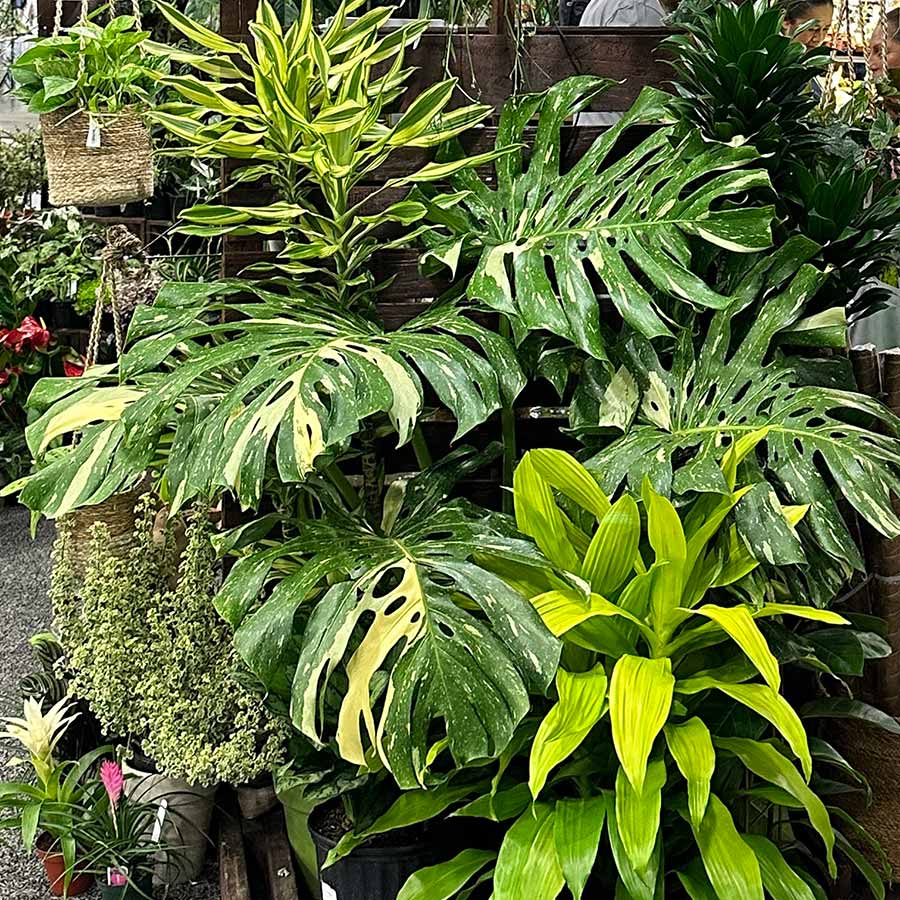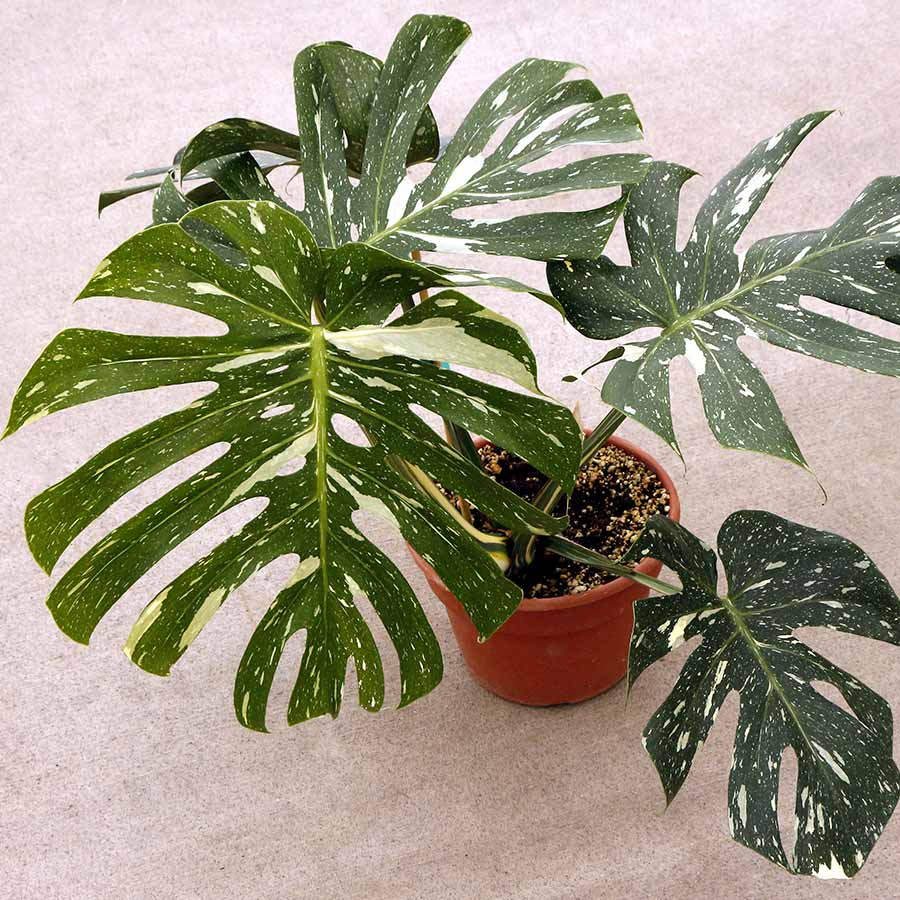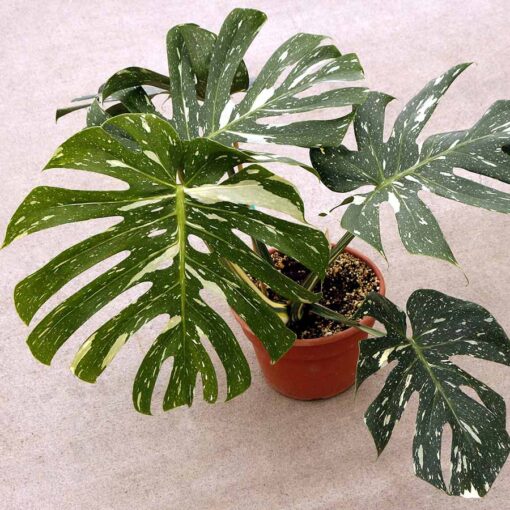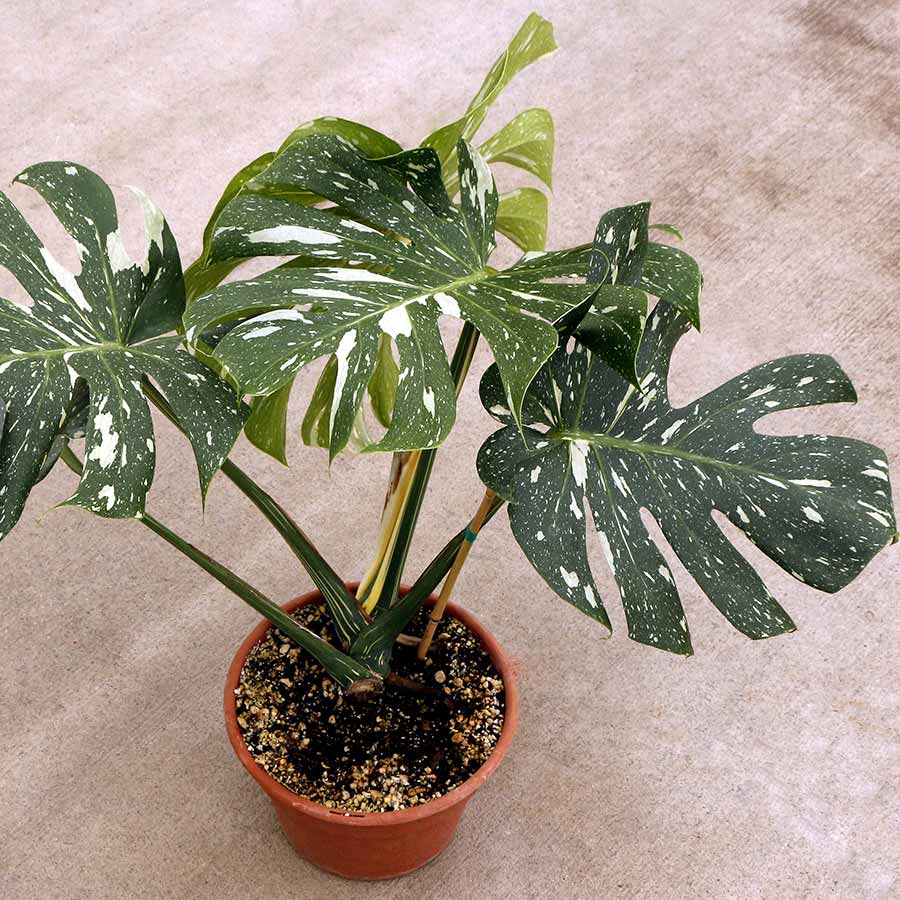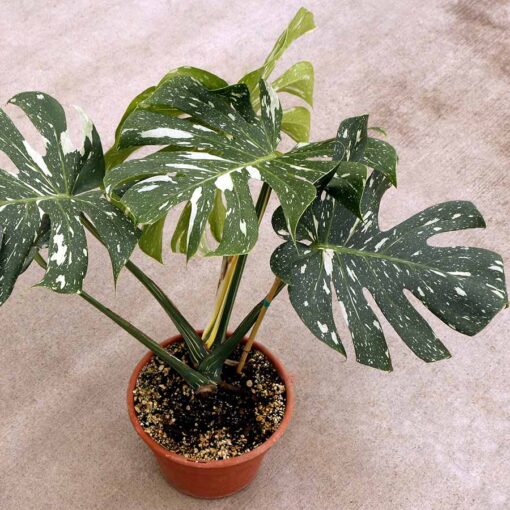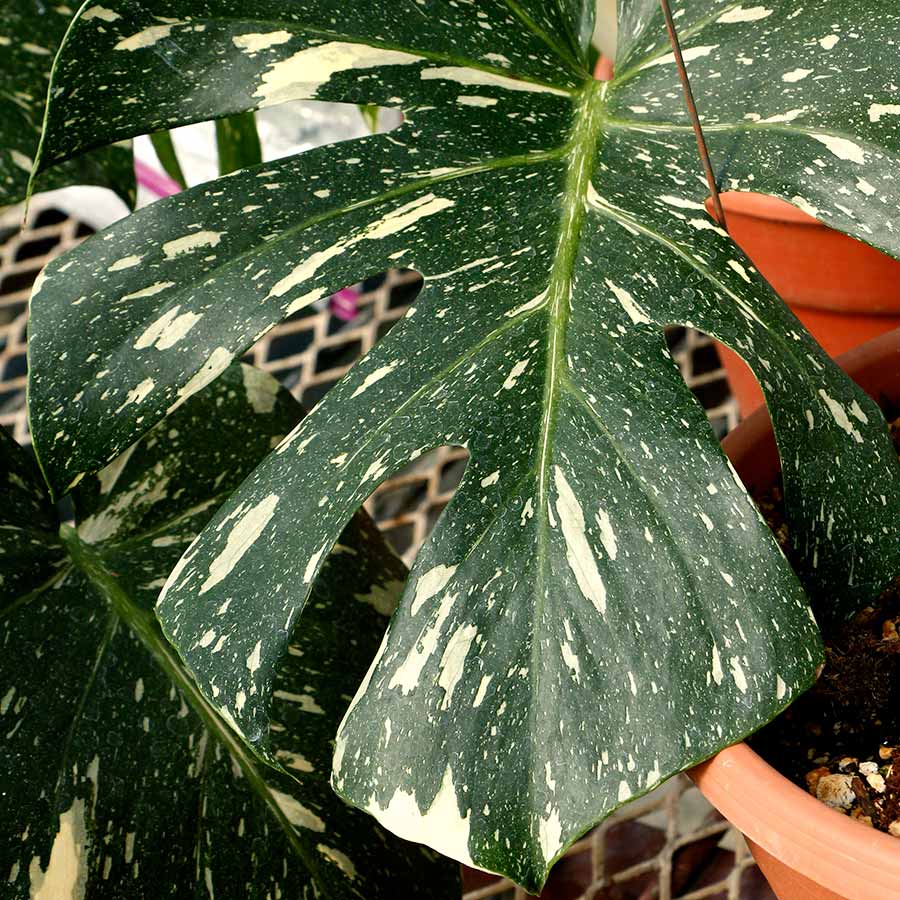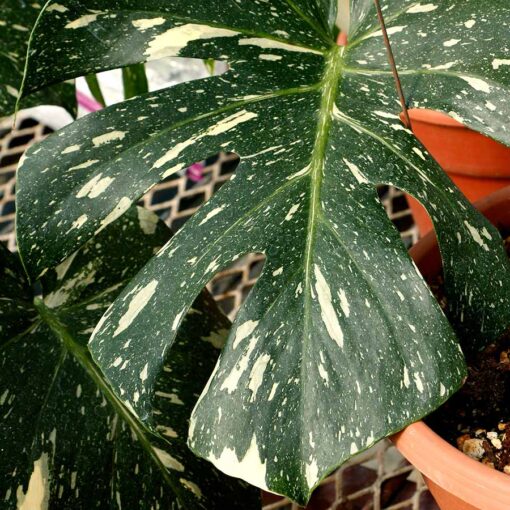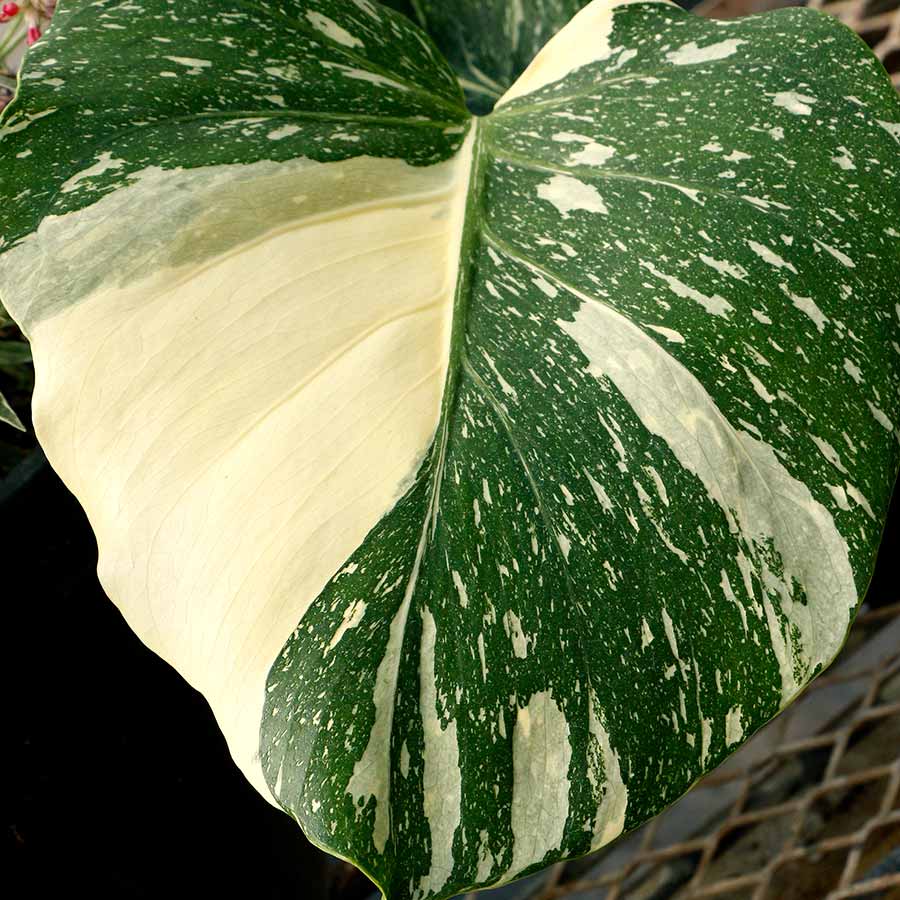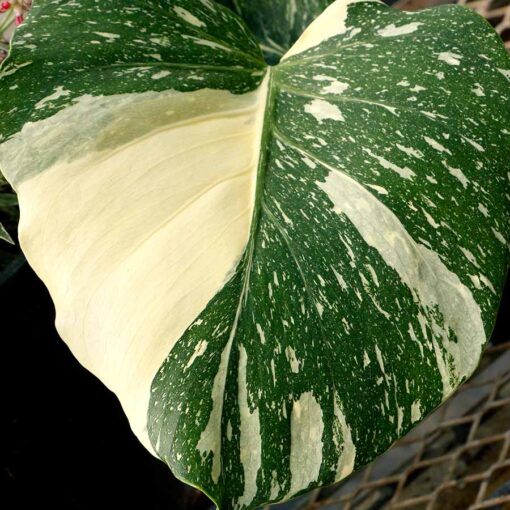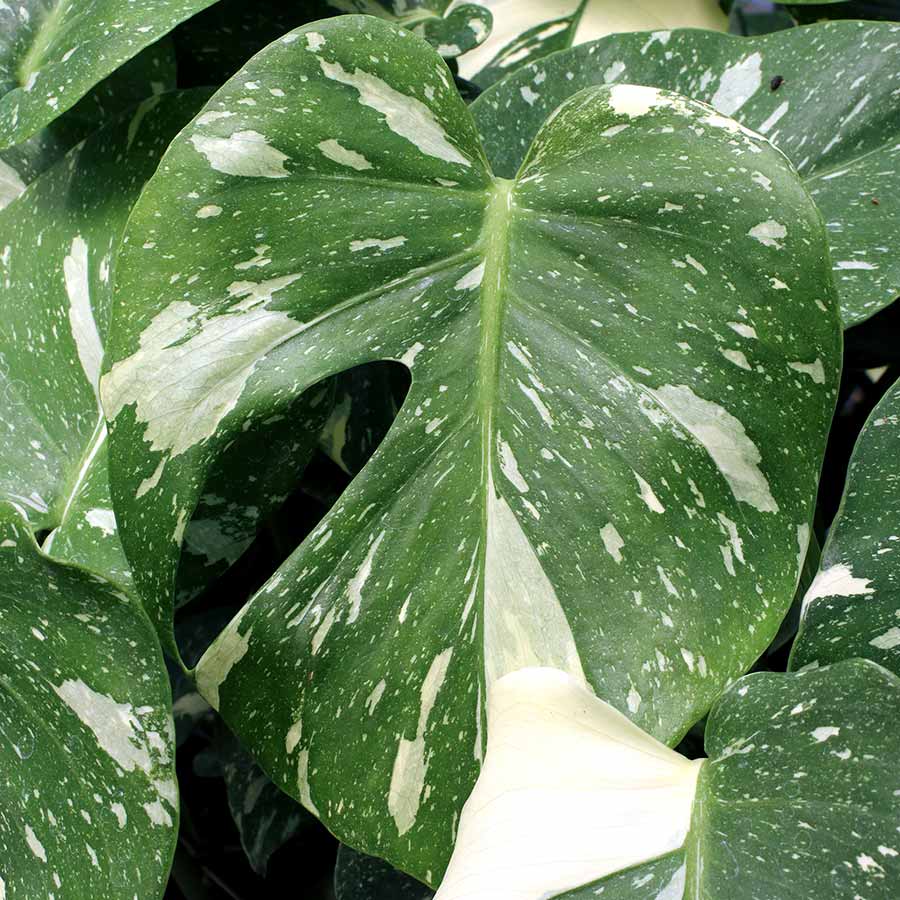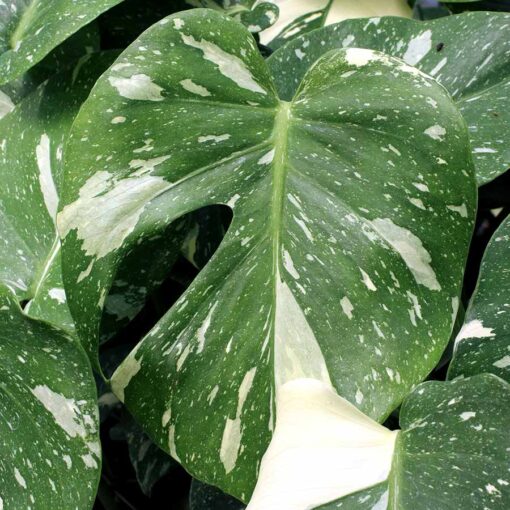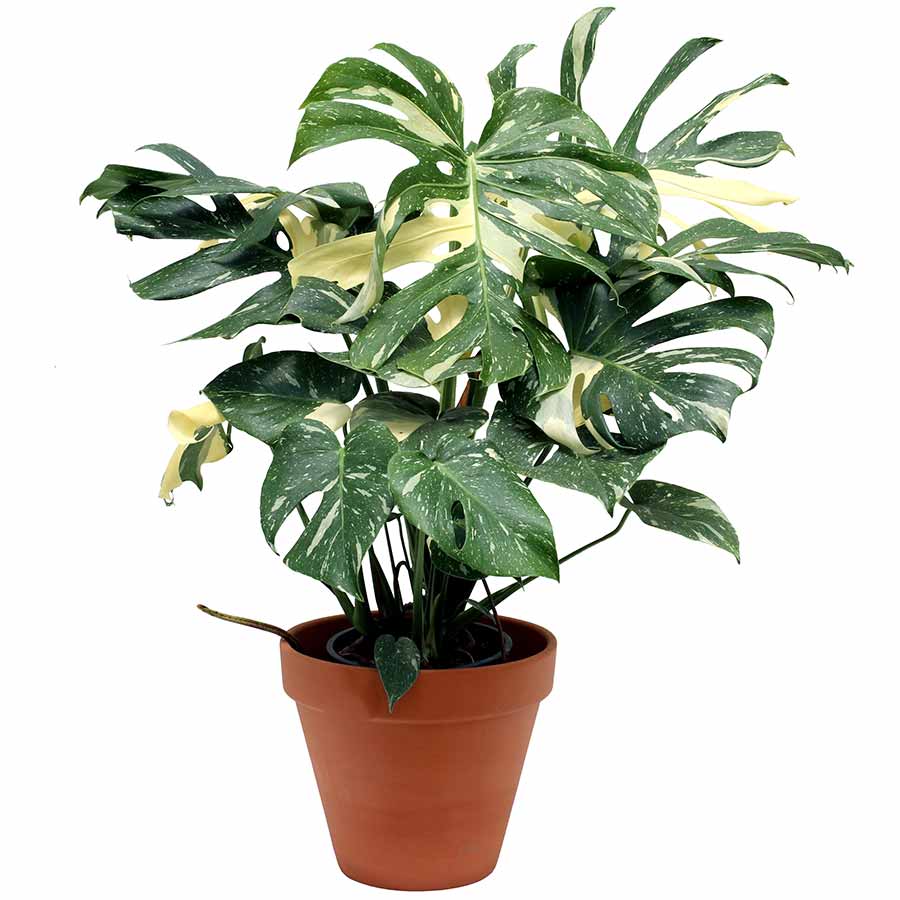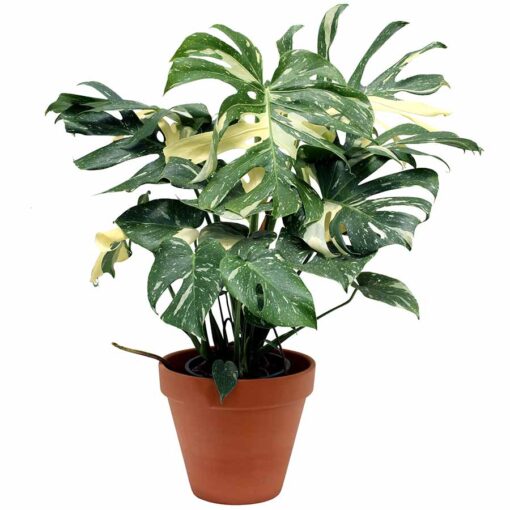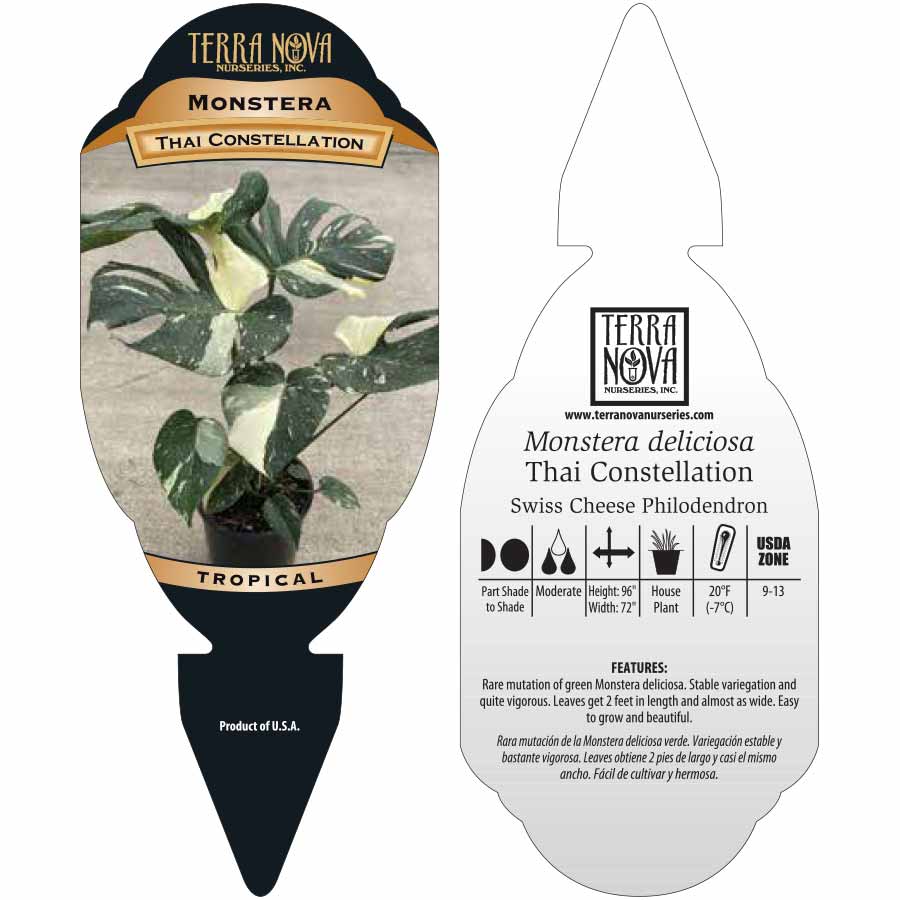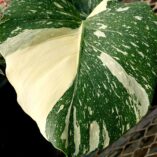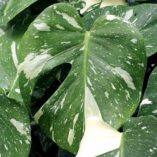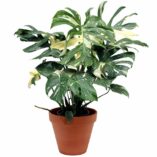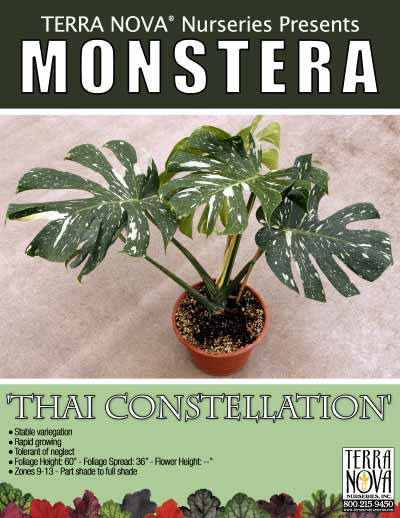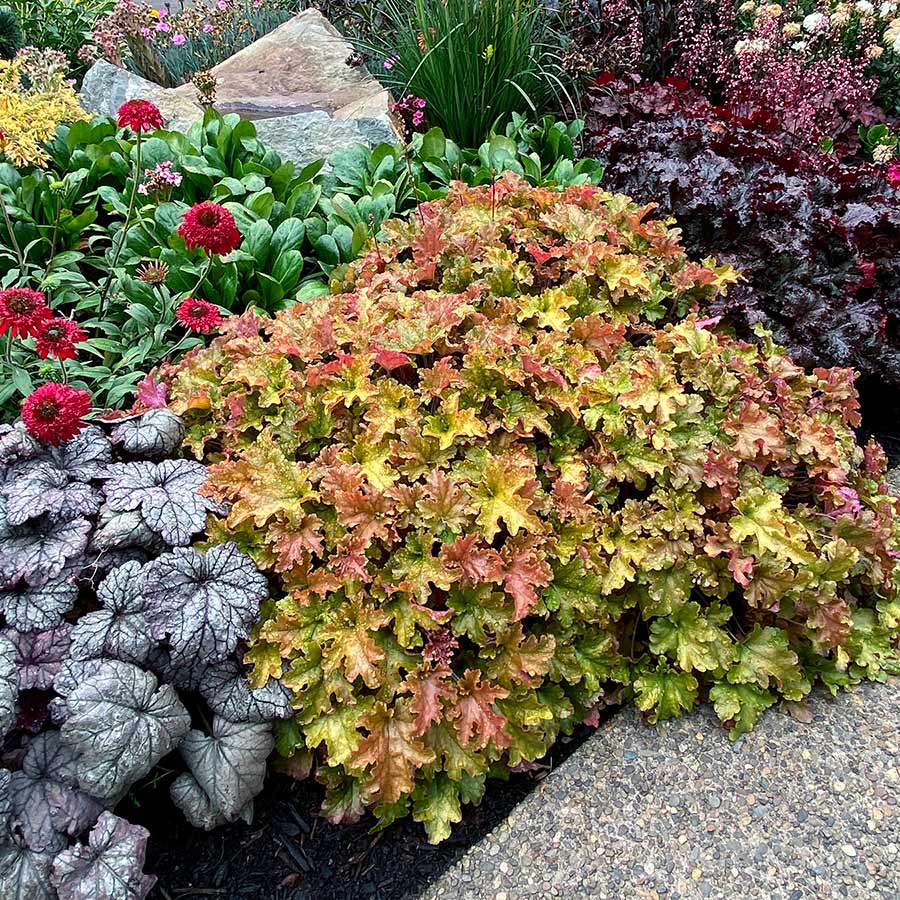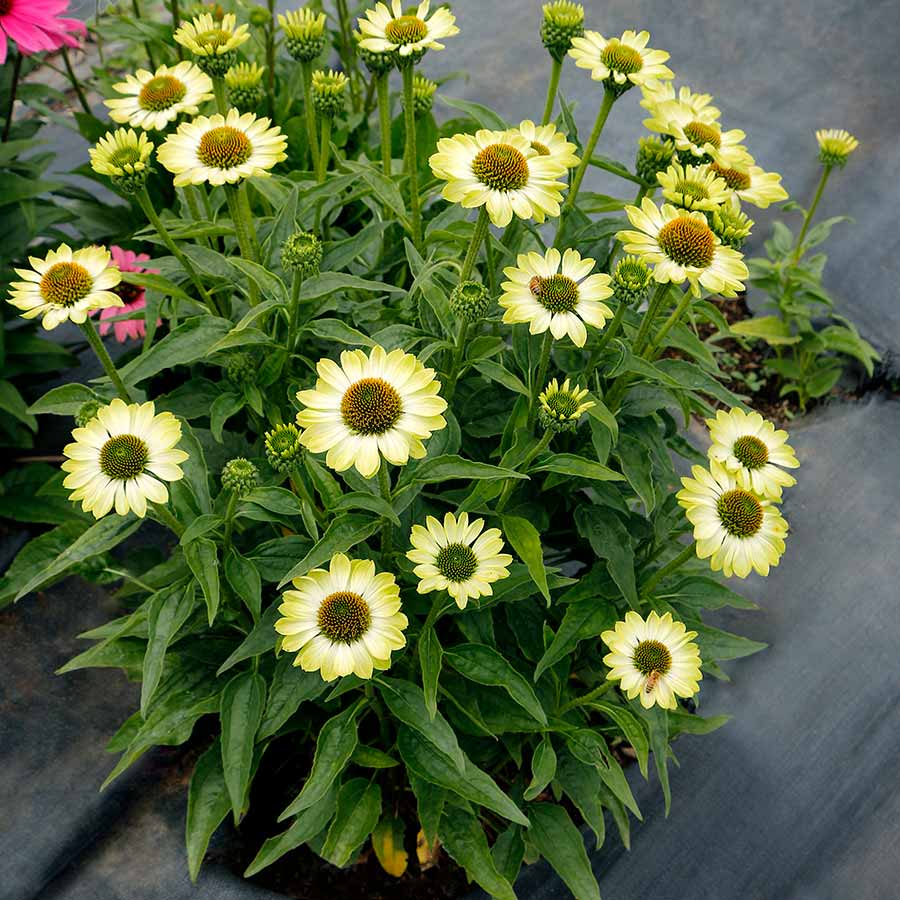| Common Name | Monstera |
|---|---|
| Family | deliciosa |
| Genus | Monstera |
| species | -- |
| Plant Type | Perennial |
| US Patent # | -- |
| EU Grant # | -- |
| Bloom Time | -- |
| Flower Color | -- |
| Foliage Color | Green, White |
| Dormancy | -- |
| Exposure | Part Shade, Full Shade |
| Growth Habit | Upright |
| Growth Rate | -- |
| Hardiness Zone | 9, 10, 11, 12, 13 |
| How Different? | -- |
| Landscape Value | Unusual house plant, container plant. |
| Most Active Growing Season | -- |
| Persistence | Evergreen |
| Size (HT/W/FL HT) | 60" / 36" / --" |
| Soil (Garden) | -- |
| Water (Garden) | -- |
| Special Uses | -- |
| Comments | -- |
Monstera Thai Constellation
|
*** PLEASE NOTE ***
Additional shipping and handling fees may apply. |
Rare mutation of green Monstera deliciosa. Famous for its fenestrated leaves and stable variegation of creamy flecking and surprising swaths of solid bright cream. This plant has been the “it plant” for years. The unfurling of each leaf is an exciting event, with ever-evolving fenestrations and variegation patterns. Easy to grow and a must-have for any houseplant enthusiast. Stable variegation and quite vigorous. Leaves get 2 feet in length and almost as wide.
USDA Hardiness Zone(s): 9-13
Size (HT/W/FL HT): 60″ / 36″ / –”
Exposure: Part Shade, Full Shade
Bloom Time(s): —
- Additional information
- Grower Info
- FAQ's
- Product Profile & Growing Recipe
- Hi-Res Images
- Tag
- Articles
| Water (Greenhouse) | Dry slightly between waterings |
| EC | 1.0 – 2.0 |
| pH | 5.5 – 7.0 |
| Fertility Needs | — |
| Notes | — |
| Finish Time to 4″ | 6 – 8 weeks |
| Finish Time to Gallon | 8 – 12 weeks |
| Day Length for Flowering | — |
| Do monsteras like to be root-bound? What happens if they are root-bound? Monsteras are really easy, good houseplants. Monsteras thrive for years in the same container, providing they have adequate water and nutrition. Nothing much happens when Monsteras become root bound, at best, you’ll slow their growth a little. |
| How large should a monstera pot be? What is the risk of using a pot too large for the plant? A standard rule can be applied here. When potting up a houseplant, go no more than 2″ larger in diameter for the pot. If one uses too large of a pot, the danger becomes from soil going into an anerobic state and harboring pathogens that can attack the plant. Anerobic soil smells bad and attracts fungus gnats. |
| How do you know it’s time to repot your monstera? If water becomes an issue of frequency, then it might be time to give it a little more room. In addition, if new growth comes to a halt after several months, and you want the plant to get larger, a new, larger pot is in order. |
| What should you do if it has become root-bound? How do you remove it? If the plant has become rootbound and becomes troublesome for water needs or other stresses, repotting is a good remedy. Removing a Monstera plant out of a pot can be tricky. Sometimes a table knife becomes your friend in transplanting, by slipping the knife between the roots and the side of the container, they usually come free easily without damaging the plant. Remember that the top of the pot must be the widest point of the container. |
| Do you have any other tips? If monsteras are in front of a glass window, try not to put them in south or west facing windows. Leaf scorch shows up quickly and never repairs itself. Monsteras are still high value, coveted plants. Treat them well and they’ll outlive you. |
All photography is property and © of TERRA NOVA® Nurseries, and is only to be used for promotional material related to TERRA NOVA® products.
Please credit TERRA NOVA® Nurseries in the following manner:
Photo(s) courtesy of TERRA NOVA® Nurseries, Inc.
www.terranovanurseries.com
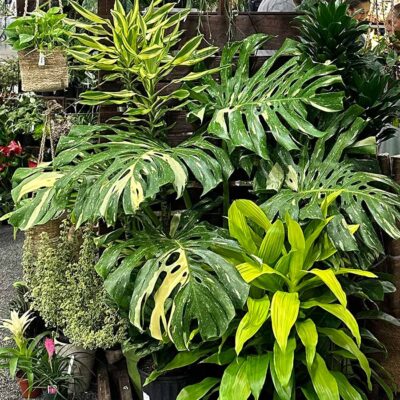  |
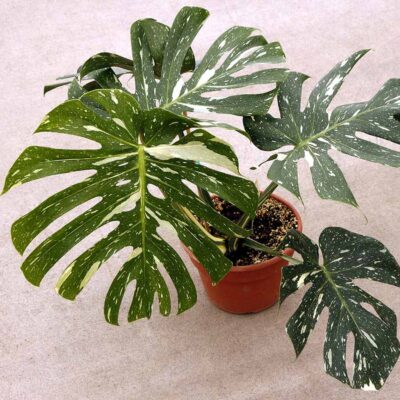  |
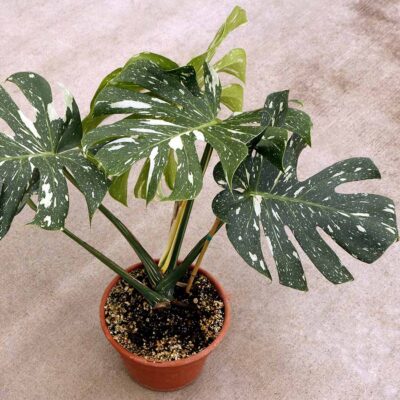  |
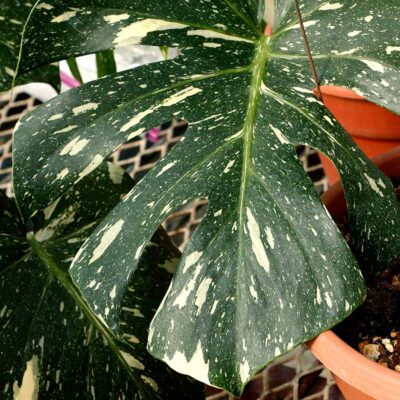  |
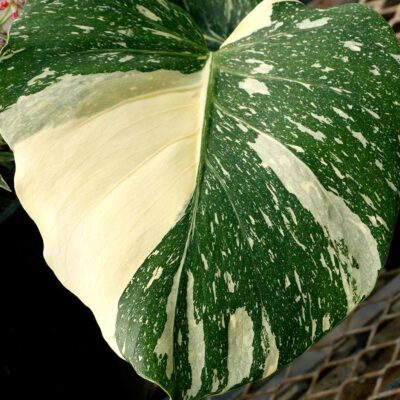  |
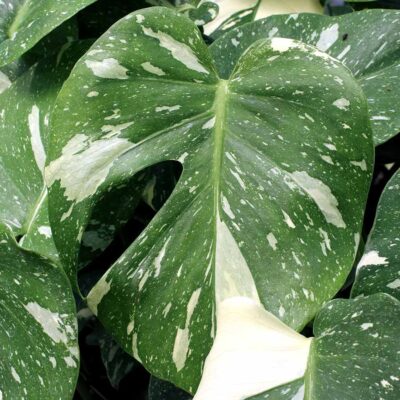  |
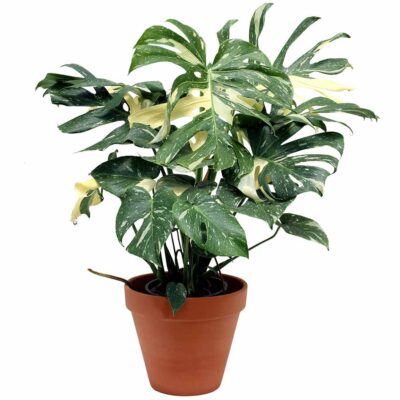  |
Our tags are produced using Adobe Illustrator (.ai) format.
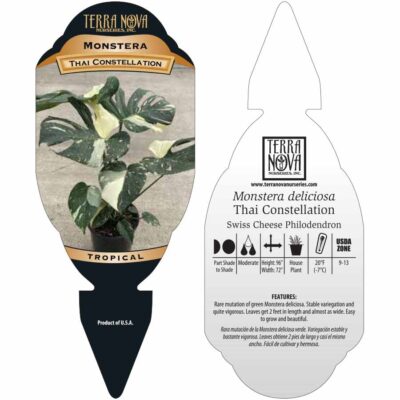  |
Get the latest FREE version of Acrobat® Reader™
here.- July, 2024 – Homes & Gardens: Now is the time to fertilize your monstera for a luscious indoor jungle – plant experts share how to give this statement houseplant a boost – click here
- January, 2024 – Homes & Gardens: Best variegated indoor plants – 4 varieties with an unusual aesthetic – click here

